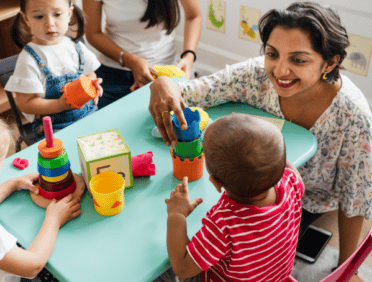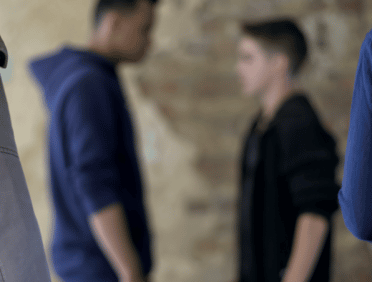Child protection and safeguarding guidance is an important part of everyday activity.
What is Safeguarding?
Starting off, let’s cover the basics of what safeguarding is. Safeguarding is a term which we use in both the UK and Ireland to talk about measures we take to protect the well-being, health and human rights of people. It allows vulnerable adults, children and young people to live in a world that is free from neglect and abuse.
What is Child Protection?
Child protection is considered to be the safeguarding of children from exploitation, abuse, violence, and neglect. The UN Convention has a specific article, article 19, which outlines the rights of children both in and out of the home.
What is Child Abuse?
Child abuse is considered to be the deliberate inflicting of harm upon a child by an adult or other children. There are four different types of child abuse that are understood and recognised by law. These are physical, sexual, emotional, and neglect.
Who is at a Higher Risk?
It’s important to understand that there are many categories who are considered to be at risk when it comes to child abuse. However, those who are often at higher risk include people in poorer economic situations, those who live in minority communities, and young girls particularly.
What is Contextual Safeguarding?
Contextual safeguarding is something which recognises the impact of the social/public context on the lives of young people, and as a result, their safety. Contextual safeguarding is therefore concerned with identifying, responding, and tackling causes of abuse and harm that are posed to young people outside their home environment. This can come from either other young people or adults.
Safeguarding Requirements For an Organisation
In terms of safeguarding, the safeguarding requirements of an organisation is that they have a safeguarding policy. The safeguarding policy should contain certain information.
A good safeguarding policy will have a statement of commitment to protecting children. It will outline the purpose of the policy, and then talk about the scope of the policy and who it applies to. This can be staff, volunteers, trustees, and other groups.
The safeguarding policy should also have the definitions of safeguarding and child protection clearly defined. There should also be reference to a legislative framework that is applicable for the policy, like for example the Children Act 1989. The policy should also talk about things like underlying principles, for example the welfare of the child is the most important factor in the policy, and all about information sharing. There should be key details of people who are responsible for developing and enforcing the policy, such as their name, job title, and contact information. There should also be the date that the policy was adopted, and plant review date of the policy to make sure that it’s still working.
Sporting organisations or any organisation which has a governing body should adopt its own policy and procedure guidance. A safeguarding policy statement will need to be properly linked to a set of detailed policies and procedures that can explain the steps adults within the organisation have to take in order to keep the children safe.
Finally, a safeguarding policy statement should include a list of information. First of all, the policy statement should talk about how staff and volunteers should respond in normal circumstances under concerns about the welfare of a child. It should also cover how the organisation will respond to allegations of abuse made against another child, or how the organisation deals with allegations of abuse made about an adult working within the company.
Your policy will be expected to cover how it will be possible for the company to recruit the correct people to work with the children, and how there are enough adults to supervise the children under your care in an effective manner.
Your policy should contain a proper code of conduct for all the staff and volunteers who work in the organisation, and it should also talk about how the organisation will both respond to and take preventative measures against bullying. There should be provision in a policy for how the organisation deals with concerns regarding online abuse. The policy also has to explain how child protection records will be stored, how images of children will be taken and stored appropriately where applicable, how the organisation prevents children from being radicalised, and your policy should generally be acceptable to everybody in terms of the language that is used.
Preventing Neglect, Abuse and Exploitation
It is the responsibility of individuals within an organisation to prevent abuse, neglect, and exploitation of children and vulnerable parties. This is done in the following ways.
First of all, it is expected that all the members of an organisation who will be working with these parties receive adequate training on how to do so in a considerate and effective manner. This training should also include recognising the signs of abuse or neglect, being able to pre-emptively notice them, and what to do if something is brought to your attention.
The business itself should be trained in the prevention of exploitation, abuse, and neglect by making sure that they have a safeguarding policy that is followed by all staff, and they hire only qualified, vetted, and approved individuals to work within the organisation.
Keeping Children Safe in Education and Other Settings
When keeping children safe in education, it is the responsibility of the education provider to create a safeguarding policy and have all staff familiarise and follow it to the letter.
When it comes to keeping children safe, there are usually six principles that are followed.
Empowerment is all about making sure that children are supported and encouraged to make decisions about their lives via informed consent.
Prevention is about trying to take action before a problem occurs rather than afterwards, in an attempt to prevent harm from occurring to the child.
Proportionality is all about finding the least intrusive way of responding to a risk that has been presented to a child and taking that as the course of action.
Protection is all about putting the welfare of the child above and beyond any other criteria in the decision-making process. Simply put, everything that is done should be done with the best interest of the child in mind.
Partnership is all about encouraging cross disciplinary cooperation with other important individuals like the local authority or community leaders to protect children from harm.
Finally, accountability is all about making sure that there is an appropriate amount of transparency and accountability taken when taking steps to protect children from the risk of harm.
Child Safety Online
With the internet now commonplace in schools, child safety should be thought about in the online realm as well. If children have internet access, it needs to be heavily restricted and maintained to make sure that they cannot view anything which might be considered harmful or put them in contact with parties who may wish to do them harm. Your safeguarding policy should have provision in it for the online protection of children as well.
Safeguarding Disabled Children
Safeguarding disabled children is all about recognising the particular circumstances that might make them more vulnerable to the risk of harm either at home or in a school environment, and then taking appropriate steps to deal with that. Safeguarding policy should have provision for disabled children within it, and every step should be taken to make sure that they have a safe and healthy environment at school.
Cross-Border Child Protection and Safety
There will be many situations where it is necessary to cooperate with other countries or areas for the sake of child protection and safety. The provision in the safeguarding policy should set out what to do in these situations, how to go about instigating cross-border child protection, and collaborating productively with other parties to ensure the safety and welfare of the children in question.
Suspicion of child abuse should be reported immediately to the relevant authority, and should be handled with careful documentation and due diligence every step of the process. There should be reasoning and actions taken that are recorded for the protection of the company or business, and anyone working in close proximity to children should report abuse immediately to their superior before attempting to resolve any issue by themselves.
LearnQ Training
When it comes to providing training for relevant parties, it’s important to acknowledge that LearnQ can help. We are happy to offer a range of training schemes that help to equip people with the knowledge and skills that they need to not only design safeguarding policy, but understand the importance of child protection, and work out how to handle a situation as it occurs.
Receiving proper training is often a vital prerequisite for professionals who want to work closely with children, so it’s important to acknowledge this and to commit to doing as much training as possible. We are happy to train your entire staff if requested.
To download a .pdf of this blog, please click here












